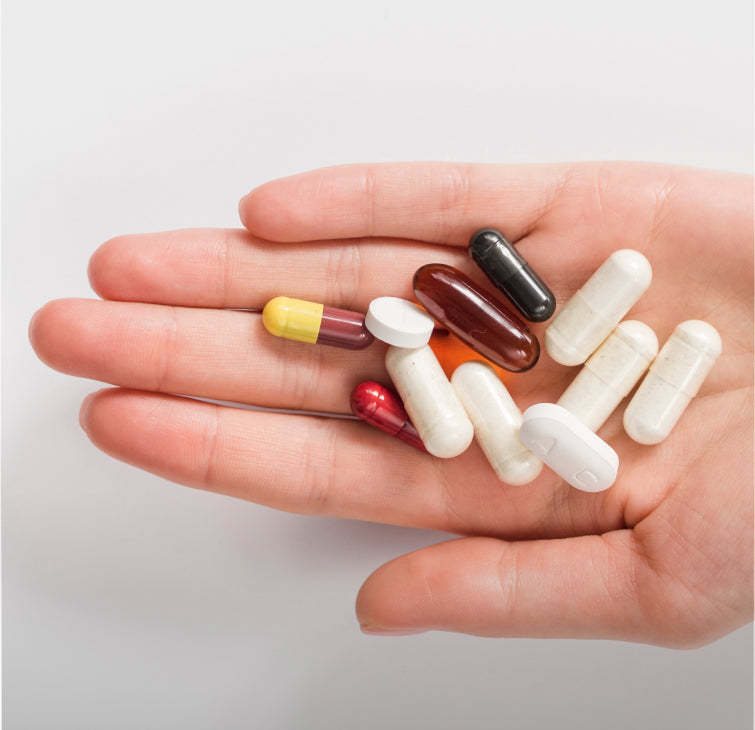Less known than other B vitamins, such as B12 or B9, vitamin B6 nonetheless remains a so-called “essential” vitamin for the body.
In this article, we will look at its role, its benefits and all the characteristics associated with it.
What is vitamin B6? (Definition and role)
Vitamin B6 is a B group vitamin, also called pyridoxine, which is naturally found in 3 forms:
- Pyridoxine
- Pyridoxal
- Pyridoxamine.
These forms are, as they are, inactive. It is once in the body that it transforms into its active form.
It is a water-soluble vitamin that the body does not synthesize, nor does it store it. It is called “essential” and must therefore be provided daily through food.
What is the role of pyridoxine?
Vitamin B6 plays several major roles and is involved in many enzymatic reactions.
The European Food Safety Authority (EFSA) has also recalled the roles in which it is involved.
Here are some of the actions in which it is believed to have a beneficial effect:
- It is essential in the synthesis and breakdown (metabolism) of amino acids and proteins. (EFSA, 2010)
- Associated with vitamin B12 and folic acid (vitamin B9), pyridoxine participates favorably in the synthesis of hemoglobin and the renewal of the number of red blood cells.
- It also intervenes on the immune level since it supports lymphoid tissues and participates in the synthesis of white blood cells, the body's first defenders against pathogens.
- Vitamin B6 helps mobilize energy by actively helping with glycogenolysis, which is the technical term which corresponds to the transformation of sugar stored in the liver into sugar and which can then be used by all organs.
- It helps the proper functioning of the nervous system and supports it by allowing the production of important and essential neurotransmitters such as dopamine, serotonin, norepinephrine, GABA (gamma aminobutyric acid) and others. (EFSA 2009, 2010).
- It contributes to having a healthy skin area.
In addition to all these aspects in which vitamin B6 is involved, it is also considered a coenzyme. That is, it helps other enzymes catalyze many other biochemical reactions.
What are the benefits of vitamin B6?
Looking at the different roles in which vitamin B6 is involved and if the daily intake is covered, the benefits on the body are interesting:
From a physical point of view, vitamin B6 prevents physical fatigue and allows the body better resistance to exercise.
Acting on the synthesis of various neurotransmitters, pyridoxine contributes to better brain health and de facto allows, among other things, an easier adaptation to stress and stressful agents.
Thus, it actively participates in nervous, psychological and emotional balance .
Furthermore, it helps with better immune defense against infectious agents that the body may be confronted with.
What are the needs of the organization?
In the context of vitamin B6, the nutritional reference is “satisfactory intake”.
This intake changes according to the age, sex and physiological state of the individuals.
They're from :
- 1.5 mg/day for women and 1.8 mg for men.
- 2 mg/day for pregnant and breastfeeding women.
- 2.2 mg/day for elderly people.
What are the symptoms of a lack of vitamin B6?
This vitamin has an action on the entire body, a deficiency in vitamin B6 can lead to certain risks.
A deficient person will be more fragile and less dynamic, tired and asthenic . More particularly on the nervous system, it will be on edge, more on edge, irritated or even depressed.
A lack of this essential vitamin can also lead to skin disorders and cause imbalances such as seborrheic dermatitis, localized inflammation and acne.
Furthermore, intervening in the metabolism of hemoglobin, a deficiency can cause a particular anemia , which if left untreated can prove severe.
What foods contain vitamin B6?
Vitamin B6 is found in animal and plant products.
From an animal source, vitamin B6 is found in certain fish such as sole or mackerel, in offal, such as beef liver, kidneys and red and white meat. It is also present in eggs.
Some plants also contain vitamin B6. This is the case for whole grains (oats, rice, wheat germ), legumes such as chickpeas and white beans.
Garlic and potatoes also contain it, as do bananas and kiwis.
Vitamin B6 is found in oilseeds such as pistachios, walnuts, hazelnuts and sunflower seeds.
Vitamin B6 in food supplements?
For all nutrients poorly stored by the body (including vitamin B6) it is always interesting to have adequate daily intake.
Therefore, if the intake is not sufficient in the diet, care must be taken to supplement.
With Multivitamins and Minerals from Argalys, you ensure your recommended daily intake of vitamin B6, but also 16 other essential elements that each capsule contains for a body in great shape.
Bibliography:
- https://www.efsa.europa.eu/en/efsajournal/pub/1225
- https://efsa.onlinelibrary.wiley.com/doi/epdf/10.2903/j.efsa.2016.4485
- https://ciqual.anses.fr/#/constituants/56500/vitamine-b6-(mg-100-g)
AUTHOR
Fatma Sakhri is a naturopath in the Lyon region.
After training at the Lyon School of Medicinal Plants & Natural Knowledge, Fatma Sakhri joined the Euronature institute affiliated with FENA (French Federation of Naturopathy Schools).
She is part of our partner network!
 04 74 03 98 80
04 74 03 98 80









